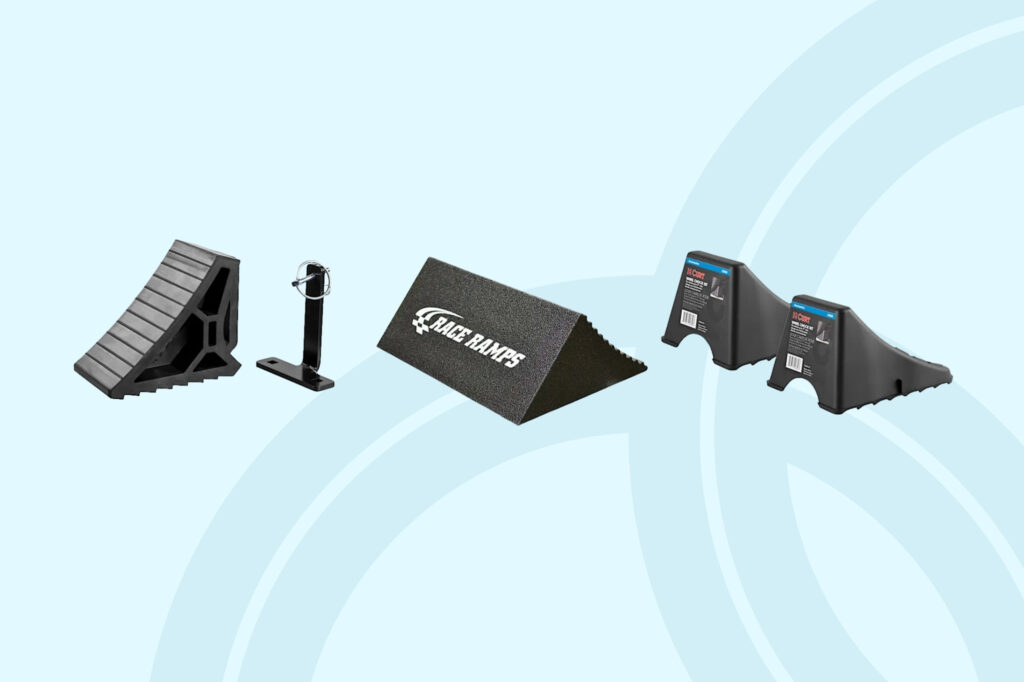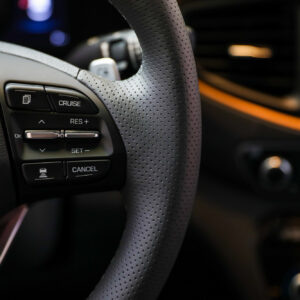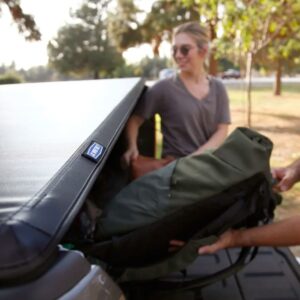Parking space is never a guarantee when you’re away from home. Whether you’re parking for a few minutes for a quick run to the store or several hours to run errands, you need to ensure your vehicle is secure wherever you leave it.
If the available parking spots aren’t level, you must take measures to ensure your ride won’t move due to the slight incline. It could hurt pedestrians, contribute to traffic, or even cause an accident, depending on where it rolled off to. The results can range from expensive fines to hefty repair and hospital bills.
Fortunately, you can avoid all that hassle if you have a wheel chock.
What is a Wheel Chock?
Wheel chocks are small wedges that you can place against your vehicle’s wheels to keep them from moving. They provide an uphill barrier that the wheel/s must climb to roll, essentially using friction and gravity to keep the car still.

Types of Wheel Chocks
There are different types of wheel chocks based on their use, material, and surface texture.
Use
Standard wheel chocks are light and suitable for everyday vehicles, while heavy-duty chocks are used for trucks and trailers.
If you’re going off the beaten path, off-road or all-terrain wheel chocks can keep your ride in place wherever you decide to stop.
Material
Wheel chocks are made from materials like polyurethane plastic, rubber, aluminum, and steel alloy. Each has pros and cons.
Polyurethane plastic wheel chocks are lightweight and weather-resistant, making them ideal for outdoor use.
Rubber wheel chocks are durable and provide excellent grip, but they’re not as resistant to the elements as other types.
Aluminum wheel chocks are heavy-duty and suited for bigger vehicles and long-term storage.
Steel alloy wheel chocks are the strongest, able to keep big vehicles still and in place when they’re on uneven surfaces.
Surface Texture
Wheel chocks have different surface textures that offer varying degrees of grip and performance.
Serrated rubber or plastic chocks are easy to use because of their pyramid-like design. Their sides look like the levels or “steps” of a pyramid, and they work on both sides of the wheel.
Wheel chocks with aluminum teeth are a good choice if you’re parking on gravel or somewhere muddy.
For more conventional surfaces, ones with diamond plating would do, as they’re designed to coincide with tire treads well. You can count on them to increase grip and friction.
If you’re looking to store your vehicle long-term and your parking space isn’t on even ground, get smooth cradle chocks. They can keep your ride still and in place. Just keep in mind that they’re not suited for towing and lifting.
Wheel Chock Considerations
Besides use, material, and surface texture, be sure to consider the following things if you’re in the market for wheel chocks:
Height and Tire Curve Diameter
To pick wheel chocks that will mesh well with your tires, take note of their size or height and curve diameter. Remember: ill-fitting wheel chocks won’t be able to reliably keep your ride in place.
A good rule of thumb is to go for shorter chocks if you have shorter tires. Choose taller wheel chocks if your tires are huge.
Steepness
Steeper chocks provide a firmer wedge than those with chocks with a more gradual rise. The downside is that they’re often hard to place, especially on extremely uneven surfaces.
Load Limit
Wheel chocks will only reliably work if your vehicle’s weight is well within their load limit, so be sure that’s the case with your pick.
Extra Features
Some wheel chocks have handles or eye bolts to make them easier to handle and enhance security.
When Should You Chock the Wheels?
Use wheel chocks when the parking brake isn’t available or if your vehicle needs additional support because of its weight. You can also use them in scenarios where your car may roll (like parking on an incline) and when you’re towing or lifting.
How Safe Are Wheel Chocks?
Wheel chocks are safe to use as long as they’re maintained well and used properly. The fact that airlines use them to keep aircraft still speaks volumes about their reliability.
Wheel chocks only tend to be dangerous to use if they’re damaged or if you incorrectly place them. As such, it’s crucial to follow proper guidelines before placing the chocks.
How to Use Wheel Chocks
While the steps on how to use wheel chocks vary depending on their type, the general process usually goes like this:

- Step 1: Choose the right wheel chock. Ensure you get one that matches your vehicle’s size, weight, and tires.
- Step 2: Park your vehicle with the handbrake on to ensure your vehicle has an additional layer of protection.
- Step 3: Place the chock on the ground against the tire you’re securing. Ensure the chock makes contact with the tire.
- Step 4: Add a second chock on the other side of the tire to add an extra layer of security, especially on even ground where there’s a chance your car can roll in either direction.
- Step 5: Place additional chocks on the opposite side of the first wheel for enhanced stability.
Common Misuses of Wheel Chocks
While they’re straightforward to use, some drivers still commit mistakes when using wheel chocks. These include using the wrong size or type, unstable placement, neglecting inspections, and more.
Using the Wrong Size or Type
As mentioned, the first step of using a wheel chock is ensuring you have the correct type. Matching the chock to the vehicle’s size and weight is crucial, as a small chock won’t effectively hold a large truck. You can always ask a mechanic if you’re unsure what type works with your vehicle.
Unstable Placement
You must place chocks on a stable surface to ensure they can support and keep your vehicle in place. Note that they won’t work well on extremely slippery surfaces like icy roads.
Neglecting Inspections
Inspect your wheel chocks regularly, as cracks or damage can compromise their ability to hold a vehicle. It’s better to get replacement ones if you notice signs of wear.
Only Using One Chock
Always use chocks in pairs to secure all potentially unstable wheels. While one is often good enough, a second chock adds an extra layer of protection to ensure your vehicle doesn’t roll.
Incorrect Positioning
Lastly, chocks should be placed snugly against the tire tread and positioned downhill. Any gap between the chock and the wheel could be enough for your vehicle to move, especially if you’re parked on uneven ground.
Any information provided on this Website is for informational purposes only and is not intended to replace consultation with a professional mechanic. The accuracy and timeliness of the information may change from the time of publication.





































